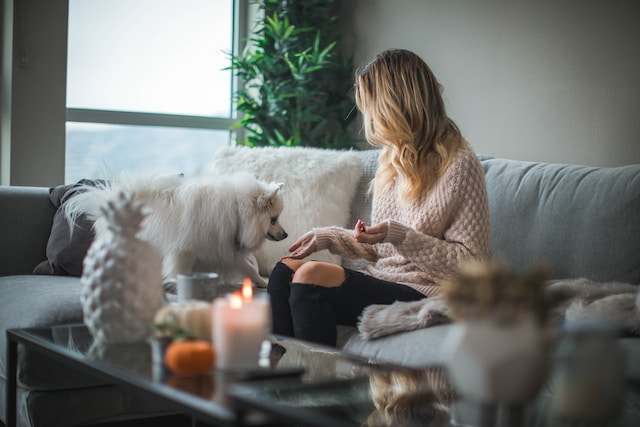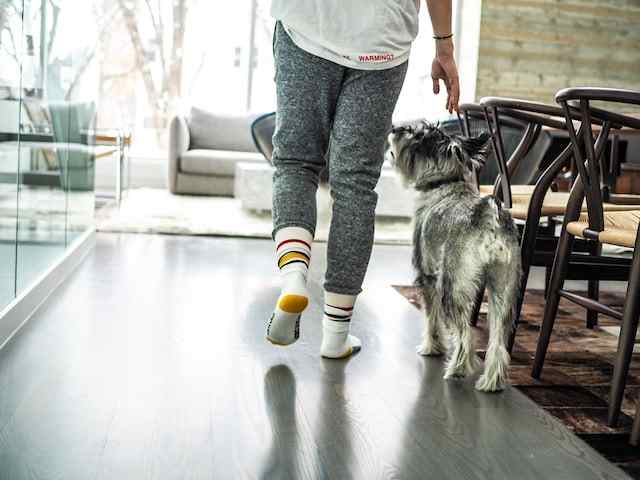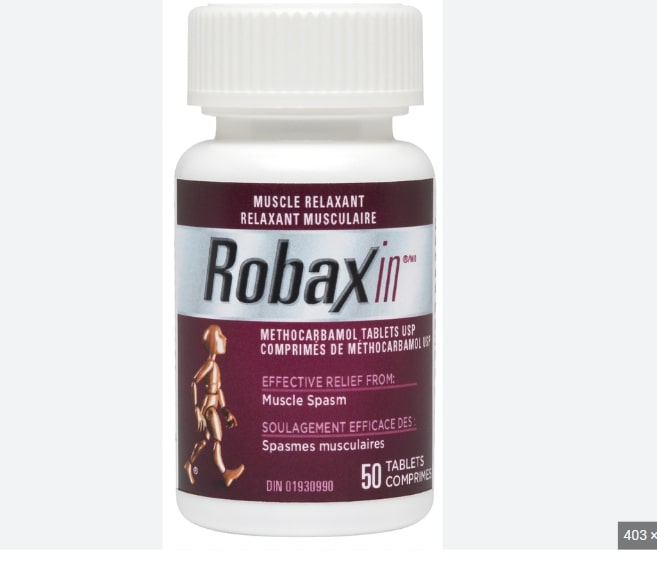
Your dog’s leg pain could be noticed when he/she starts limping and as you are watching him/her limp, you may be able to identify the leg with the problem but sometimes you may not.
Sometimes you may notice your puppy is limping but you would not be able to identify the leg with the problem, you would know something is off with their walk, so you would need to carry out a lameness test to find the leg with the problem.
Don’t worry, in this post, I would be teaching you how to conduct a lameness test for dog leg pain.
If your dog has a dangling limb (dislocation), swelling, hot limbs, obvious break, or unnatural angle no need to do a lameness test, rush your dog to the vet.
lameness test for dog leg pain

Firstly, you should know that if your dog feels pain in any of their legs they tend to drop on the sound leg.
So typically, they might drop on their left front leg which means they are putting more weight on that leg, so they can take the weight off the right front leg because that is the one they are painful on.
The second step is to take the leg you feel is causing your dog pain, start with the toes, I want to feel every digit to see if there is anyone that they feel pain.
Look into the webs of the toes and check for pustules and infection, bend the toes to see if there is any reaction from your dog.

Squeeze the joint above the toes, and bend the entire foot while doing all these things you should be observing your dog for any signs of pain.
You proceed to the hock/tarsus, bend it back and forth to see if it is painful or not, feel what is attached to the back of the hock, and feel the big gastrocnemius tendon is it painful or not? sometimes they could be pulled or strained and give them Achilles injuries.
After that feel the bones as you are going up, feel the tibia and the little bone at the back, feel the soft tissues there also, check for swellings or pain.

The next big bone above is the knee, put one hand below it to support it and move it back and forth, do feel a crunching or a popping, clicking, or crackling sound, if you do then there might be a problem.
If those sounds are accompanied by pain, swelling, and other concerning symptoms, it could be arthritis.
If you feel one knee joint and you notice it is thickened and enlarged compared to the other knee joint even if it is a little, that is called a medial buttress.
A medial buttress is your dog’s body’s way of building up scar tissue to try to support that knee joint. It is very common in dogs that have had partial or complete ligament tear and that is their body’s way of trying to stabilize that knee.

you should also perform a drawer sign, this is a test to see if there is cranial movement between the tibia in relation to the femur.
So you have to move the knee joint back and forth and observe if there is an abnormal forward movement of the tibia (lower leg bone) in front of the femur (thigh bone).
If you notice abnormal forward movement, it could be that your dog has an anterior cruciate ligament tear (ACL tear).
If you suspect an ACL tear, another test you should do is a tibia compression test.

For a tibia compression test, you should hold on to them and try to the lower leg straight out.
If your dog feels pain while doing this, it would be an ACL tear.
As you move further up the legs, I want you to feel the femur, and check for lumps, bumps, swellings, or signs of pain.
When you reach the hip joint, I want you to gently extend your dog’s hip backward while supporting the knee.
If your dog feels pain when you do this or you notice you can’t extend the hip fully backward, these might be signs of hip dysplasia or hip arthritis.
Also, feel the hip with your fingers for any crunching or crepitus because that could be a sign of arthritis.

Do this for all the legs, if you don’t know exactly which leg and which part of the leg is coming from.
The lameness test for dog leg pain is the same in all legs, though I used the back leg as an example is the same with the front leg.
So if you are examining your dog’s front legs just know that when I talked about “knees” it would be “elbows”, ankles would be wrists and hips would be shoulders.
If you are still confused about how to perform a lameness test, I would put a link to a video at the end of this post, you can watch the video for more guidance.
Note: if your dog is in severe pain don’t bother carrying out a lameness test, rush them to the vet but if it is a puppy you should watch them for 5 minutes, if they still show signs of severe pain take them to the vet.
Causes of Dog leg pain
Joint diseases

A lot of things could cause gradual wear and tear on joints and the musculoskeletal system.
Conditions like hip dysplasia, elbow dysplasia, patellar luxation, osteoarthritis, ligament disease, osteochondritis, and intervertebral disk disease.
Hip dysplasia is a deformity in the hip that occurs during growth.
In the hip joint, both the ball and the socket in the pelvis are supposed to grow at an equal rate. In hip dysplasia, uniform growth does not occur during Dosage: ¼ of a 325mg tablet for 10lbs body weight, twice a day puppyhood.

Symptoms include decreased activity and range of motion, bunny hopping, difficulty or reluctance rising, jumping running, or climbing the stairs, loss of thigh muscles, lameness in the hind leg, grating in the joint during movement, etc.
It can be treated with surgery but there are other ways to manage it safely like weight management, moderate exercise, physical therapy, pain relief, and anti-inflammatory drugs.
Elbow dysplasia is the same as hip dysplasia but in the elbow.

Osteoarthritis and rheumatoid arthritis is another common cause of dog leg pain.
Osteoarthritis is caused by mechanical wear and tear of your dog’s joints while rheumatoid arthritis is an autoimmune disease in which your dog’s immune system attacks its joints. It could begin at any time in life.
Symptoms include licking or chewing painful areas, limping before and after walks, tiredness, unwillingness to get up or walk around, walking stiffly, lameness in one or more legs, reluctance to climb the steps, jumping up and down, or being touched in some areas.

It can be treated with therapeutic lasers, therapeutic exercise, joint mobilization, hydrotherapy, anti-inflammatory medication, dietary supplements, and chondroprotective agents.
Injury or trauma

ligament tears, fractures, sprains, joint trauma, dislocations, and spinal injuries.
An anterior cruciate ligament (ACL) tear and a posterior ligament tear (PCL) are common injuries that can cause leg pain in dogs and they are not easily noticeable like fractures and dislocation.
An ACL tear is an injury to the ACL while a PCL tear is an injury to the PCL.
Symptoms include joint stiffness which is very noticeable after physical activities, limping in hind legs, sitting with one hind leg stuck out to the side, swelling, difficulty jumping or rising from the floor, and clicking sounds when he/she walks.

Rest, immobilization, physical therapy, and sometimes surgery can be used to treat an ACL or PCL tear depending on the severity of the tear.
A sprain is when a dog’s ligaments are over-stretched.
Symptoms include limping, reddened joints, reluctance to put weight on paw or limb, swollen joints, swollen paws, whining, and unwillingness to run.

For treatment your dog may be splinted to prevent movement and anti-inflammatory medications would be prescribed for the joint to heal fully.
Paw injury
Your dog could have foreign bodies, like nails, glass, sticks, plant matter, torn, or other things in their paws that could cause them pain, and injury and also lead to infection.

If your dog is showing signs of pain, limping and constantly licking their paws, it is a sign that something is up with their paws, so check.
If your dog has a foreign object you can remove it by yourself, then remove it but if you can take him/her to the vet.
If there is an injury that does not require stitches, clean the wound with an antiseptic, apply pressure to the wound to stop bleeding, evaluate the damage, apply antibiotics ointment, and put a bandage.
I advise you to change the bandage daily.
Bone disease

Your dog’s leg bones can be affected by some diseases which could cause pain in the legs.
Osteosarcoma is one of the other cancers that can affect your dog’s bones and it requires fast attention.
Hypertrophic osteodystrophy and panosteitis are diseases that are common in younger dogs especially large breed puppies and they can cause pain while walking.
Dog leg pain treatment

Though the treatment of dog leg pain depends on the cause of the pain, there are ways you can ease and reduce the pain while figuring out the cause of the leg pain.
We would be looking at some home remedies you can use for dog leg pain.
Home remedies for dog leg pain
Cannabidiol for dog leg pain

It is a great anti-inflammatory with virtually no side effects and it is also a good natural pain killer. I make sure I always have it in my house and it works for my dogs.
Dosage: one drop for 10 lbs of body weight, twice a day.
Valerian root for dog leg pain

Valerian is something typically used for sedation but it is also very helpful in decreasing spasming muscles.
Dosage: ½ ml of the tincture for 20 lbs of body weight twice a day.
Aspirin

Aspirin can also be used in dogs too, it would help with leg pain.
Dosage: ¼ of a 325mg tablet for 10lbs body weight, twice a day.
If your dog is on any other anti-inflammatory medication or they have underlying organ dysfunction, liver or kidney disease, don’t give them aspirin.
Robaxin

Robaxin really helped one of my dogs with his muscle spasms.
Dosage: for standard robaxin, the dose is about 20 milligrams per kilo of body weight, twice a day.
95% curcumin

This is a really great anti-inflammatory and pain relief that has worked well the times I have used them for my dogs.
Dosage: for standard 95% curcumin, the dose is 100mg per 10 lbs of body weight, twice a day.
You have to make sure you are giving it to your dog with a fatty meal, so it can be absorbed well, I also prefer the ones in capsule form because I don’t want it to stain my dog’s teeth.
Devils claw

This is a plant from South Africa and it helps with pain, especially back pain. It is in a liquid form in the capsules
Dosage: the vets in the Reddit dog group I belong to said I should use 1000mg per 30lbs of body weight, once a day and it worked for my dog, so you can try it too.
DMSO
DMSO is a really effective topical remedy that helps with pain.
Dosage: apply up to five drops on the leg your dog feels the pain and use your fingers to rub it in.
Note: though I have used some of these remedies, I still asked a vet in my Reddit dog group and he said they were okay.
FAQS about dog leg pain
Can a dog leg injury heal on its own?

It depends on the severity of the injury, if it is a minor injury, you could clean it up and bandage it but if it is a major injury, you should see your vet.
Can I give my dog paracetamol for leg pain?

Yes, you can give paracetamol to dogs, but you should never give it to your dog without asking your vet.
What medicine is best for dog leg pain?

You should know that dog leg pain has underlying causes, so you should find the cause first while relieving the pain.
I have mentioned the best medicine you can use to relieve the pain in this post, it is somewhere above.
Can I give my dog ibuprofen for leg pain?
No, you should not give your dog ibuprofen for leg pain, most vets and people have told me not to give ibuprofen to my dog because it can be toxic.
Can I give my dog human painkillers?

Not all human painkillers are safe for those but I have mentioned some painkillers you can use in this post, it is somewhere above.
Can I give my dog tramadol for leg pain?
Yes, you can give your dog tramadol for leg pain but it must be prescribed by a vet.
Can I give my dog aspirin for leg pain?

Yes, you can give your dog aspirin for dog leg pain but not the same dosage as humans.
Dosage: ¼ of a 325mg tablet for 10lbs body weight, twice a day.
Important information

I am not a vet, the advice and product recommendation I give is based on my experience and the experience of other dog parents in the Reddit and Facebook dog groups that I am a member of.
Though I also ask for advice from vets on some things, you can still consult your vets on something before trying any of my pieces of advice.
Here is the link to the lameness test video I promised.
Related articles
how to prevent swimmer puppy syndrome from killing your puppy